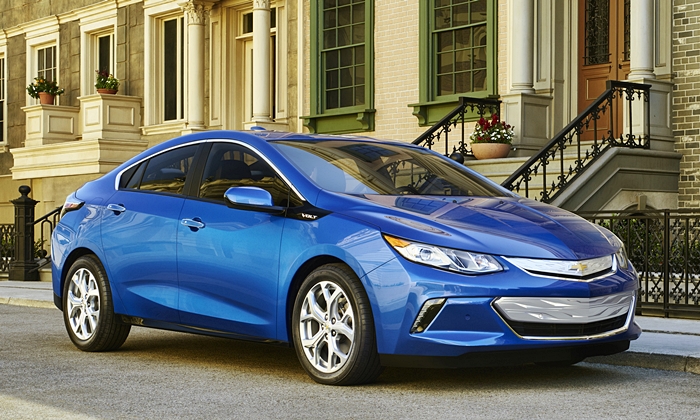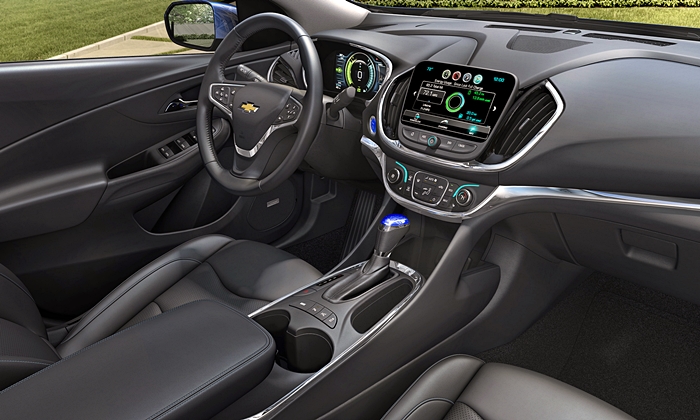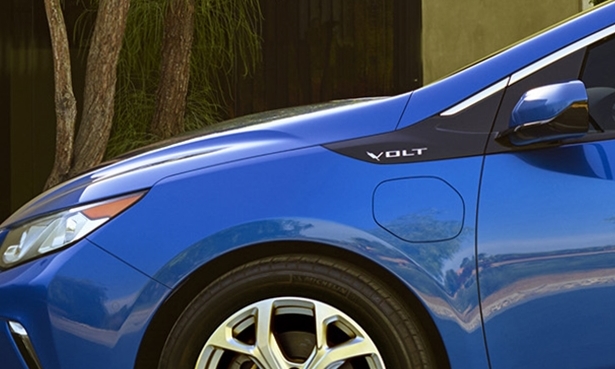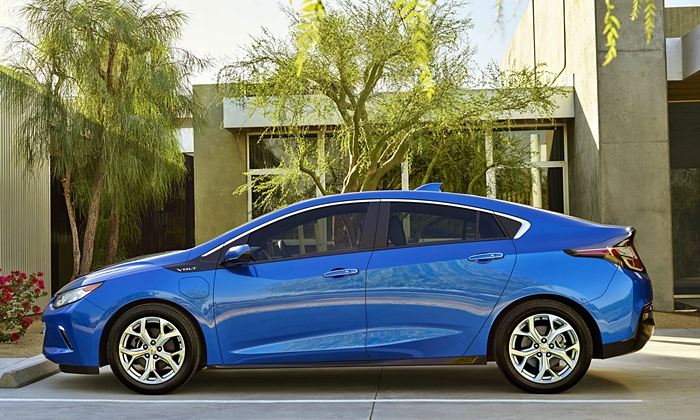The Chevrolet Volt hasn’t been the breakthrough product GM had hoped it would be, at least not in consumer perceptions, where Tesla has stolen whatever fire it initially possessed. But the roughly 70,000 people who have owned one have tended to love it–the car has outstanding satisfaction scores. For the 2016 model year, GM has drawn on extensive feedback and driving style data from these owners to redesign the Volt. There’s no revolutionary intent this time, but the evolutionary changes are notable.
The biggest changes have been made to the drive system. Like Toyota and Ford hybrids, the Volt uses a two-motor system so that one electric motor can power the wheels while another charges the battery pack. With the first-generation Volt, one of the two motors could only serve as a generator, so it was much smaller than the one that powered the wheels. With the second-generation Volt, the transmission includes a second planetary gearset, and this allows both electric motors to power the wheels when running entirely off battery power. With this change, both motors are now equal in size, and much smaller than the first-gen car’s drive motor, which when combined they match in power output: 149 horsepower. This change reduces the weight of the drive unit by over 100 lbs. It also improves both acceleration (zero-to-30 is 19 percent quicker, zero-to-60 improves less but still falls to a fairly quick 8.4 seconds) and fuel economy (by up to 12 percent).
Changes have also been made to the battery pack. Though the cell count drops by 96, to 192, capacity has increased from 17.1 to 18.4 kWh. To preserve battery life, the Volt has always used only a portion of its full capacity–it’s designed to never deeply discharge. But GM has been gradually increasing how much of the pack’s capacity is used. The more efficient motors, slightly larger battery pack, increased usage of its capacity, and other tweaks will combine to increase the car’s electric-only EPA-certified range from the current 38 miles to at least 50. Owing to this increase, GM predicts that nearly 90 percent of the trips driven by owners will be entirely powered by electricity, up from the current car’s 80 percent.
One thing that won’t change: the 2016 Volt still won’t be capable of Level III quick charging. GM claims that their usage data suggests little need for it–half of the car’s owners use only a standard wall outlet. My suspicion: quick charging tends to harm battery life, and GM doesn’t want to risk having to replace battery packs the way some electric car makers have been.
When the battery reach its minimum level (not the same as empty), a new, aluminum (instead of iron) block 101-horsepower 1.5-liter gasoline engine will kick in to either recharge the battery pack or help directly power the wheels. GM is less bashful now about the gasoline engine sometimes directly powering the wheels, and once the battery reaches its minimum level will make more extensive use of this option. Directly powering the wheels is often more efficient than using the engine to recharge the battery and then use electricity to power the wheels. Partly as a result, EPA combined fuel economy is expected to improve from the current Volt’s 38 mpg to 41 mpg. Of perhaps greater importance to potential owners: the new engine, unlike the current car’s, runs happily on regular unleaded.
And the rest of the car? Exterior length increases by three inches, to 180.4, while the wheelbase and width increase just a bit. Interior dimensions change very little. Rear headroom is down a couple tenths of an inch, while rear legroom is up sixth tenths of an inch. Both remain marginal for seating adults in the back seat (at 5-9 I fit with little room to spare). In response to owner requests, GM has added a third seating position to the back seat, but this position straddles a tall console and is intended only for short-term use by children (though adults will fit in a real pinch). Cargo space hasn’t changed at all. Curb weight changes more dramatically, dropping from 3,781 lbs. to 3,543, thanks mostly to the new engine and drive unit.
One then not captured by the specs: the base of the windshield is very high. I would personally prefer a lower cowl for better forward visibility.
And the new car’s styling? I’ll mostly let your eyes be the judge. To mine, the new design is more bland, both inside and out. Many critics have likened the new exterior to that of the Honda Civic or the Dodge Dart. Also, the exterior includes some poorly resolved details and cheats around the A- and C-pillars. That black triangle aft of the doors is a piece of plastic, not a real window. And the interior, is just an interior, with vivid displays but none of the Apple-like trim of the original. I’m a bit surprised GM didn’t come up with something more adventuresome.
Overall, I like what they’ve done with the powertrain, but not what they’ve done with the styling.




